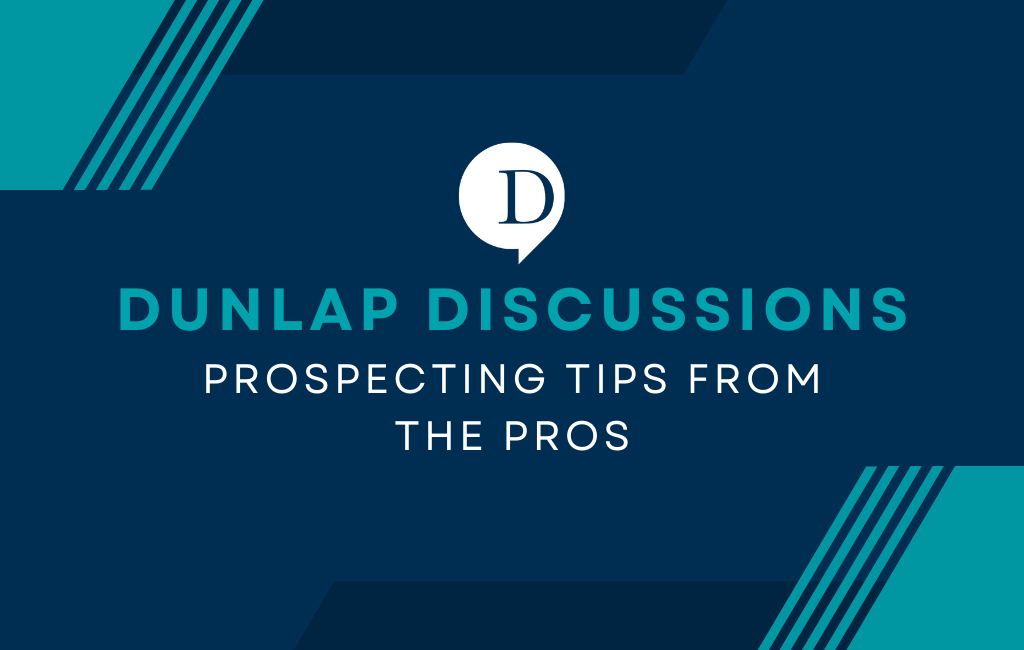Are you in sales? Do you dream of closing deals left and right? Do you dream of growing your customer list and increasing your sales?
If yes, you’re in the right place.

We interviewed our team of appointment setters to learn their top tips and advice for prospecting, getting through to the decision maker, and scheduling appointments. And by the way, on average, our team has more than 15 years of experience in the industry…so they know a thing or two about a thing or two!
Join us for our new series, Dunlap Discussions: Prospecting Tips from the Pros! In today’s post, we will cover our team’s tips on preparing to make prospecting phone calls and trying to connect with the decision maker.
Preparing to make prospecting calls:
The two biggest pieces of advice from our team are
- Review your script/message and other supporting material
- Practice what you plan on saying
Being familiar with the message you will deliver and how you plan on delivering it is a key part of strong communication. Not only will it help you feel more confident, but it will help you sound more confident, too.
When someone answers your call, you only have a few seconds to make a first impression. If that first impression is not positive, there’s a good chance your call will end with CLICK. Confidence, proper preparation, and a “smile” in your voice will set you up to have a great first impression.
Connecting with the decision maker:
Getting past a gatekeeper is no easy feat – especially a gatekeeper who is good at sniffing out distractions that might not immediately benefit the decision maker.
Even though it’s tough, it’s a necessary task. Many decision makers have one (or multiple) gatekeepers, especially at large companies. When this is the case, it becomes your mission to get through the gatekeeper so you can connect directly with the decision maker.
Our team has a few tips on the matter:
- Build rapport with the gatekeeper and remember that they are just doing their job, like you’re just doing yours. With this being said, you don’t want people to get frustrated with you because you’re doing your job, so don’t get frustrated with gatekeepers for doing their jobs. The gatekeeper can usually be an asset to you, but you’ve got to have a foundation of good-will in place.
- If it’s available to you, use the decision maker’s name; if it’s not, try to determine it early on. Often, being able to utilize the decision maker’s name will give the gatekeeper a sense of comfort with you and increase their trust in what you’re saying. If you’re still in the discovery phase and don’t yet have the correct name, do your best to find it. When you do, take note of it and use it moving forward.
- Have a short and precise introduction of yourself and your company. Don’t be a stranger! Tell the person who answers the phone who you are – but don’t take up too much time with your introduction! Remember, you only have a few seconds to make your first impression. You don’t want that impression to be “this salesperson is only in it for him/herself”. Rather, you want the impression to be “this salesperson is calling from ___ because ___.”
Come back next week for part 2 of Dunlap Discussions: Prospecting Tips from the Pros where we’ll cover the next phase of a call – speaking with a decision maker and asking for an appointment.

